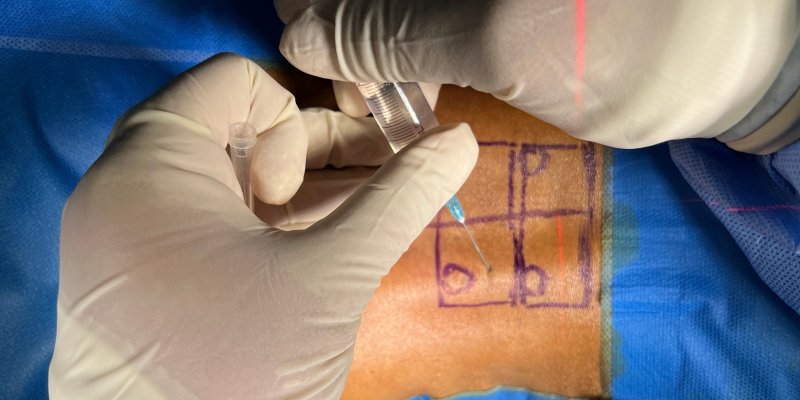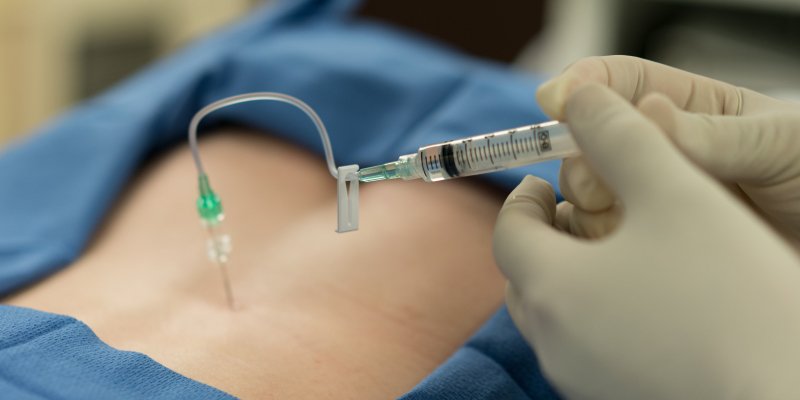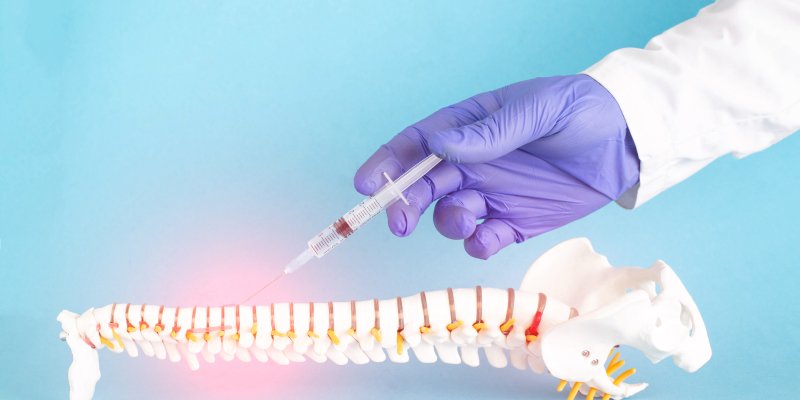Lajpat Nagar Metro Station, Block M, New Delhi, 110024
|096506 82102

Spinal Injections for Persistent Pain Relief
- Diagnostic Injections: These injections are employed to pinpoint the source of pain in the legs, back, arms, or neck, helping with accurate diagnosis.
- Therapeutic Injections: These injections are utilised to alleviate pain and provide effective treatment.




When Will Spinal Injections Help
Surgical Treatments at Noida
Surgery is always considered the last option only if none of the non-surgical treatments fail to deliver the desired results. Our Surgical options for Back Pain include:

A Selective Nerve Root Block, or SNRB, serves a dual purpose as a diagnostic and therapeutic procedure. It involves the precise administration of medication, usually an anaesthetic or a combination of anaesthetic and steroids, in proximity to an inflamed spinal nerve. The injection is directed at the intervertebral foramen, the bony opening between adjacent vertebrae, reducing inflammation and numbing pain signals transferred by the nerve.

Transforaminal Epidural Block
The Transforaminal Epidural Block plays a crucial role in alleviating the inflammatory component of Lower Back Radicular Syndrome (LRS). This targeted therapeutic approach, guided by imaging, allows for precise medication delivery. This narrative review explores the multifaceted aspects of lumbar transforaminal epidural injections of steroids, shedding light on its therapeutic potential.

Racz Procedure (Epidural Neurolysis)
The Racz Catheter Procedure, also known as Epidural Neurolysis, is employed to liberate entrapped nerves from scar tissue within the epidural space of the spine. This procedure facilitates the effective delivery of medications, such as cortisone, to the affected areas, thereby reducing pain stemming from scarring.

Sacroiliac Joint Block
Pain originating from the sacroiliac (SI) joints can lead to discomfort in the lower back, buttocks, and leg. Typically, one SI joint is the source of pain, causing symptoms on one side of the lower body. Although it is less common for both SI joints to be painful simultaneously, this joint can be targeted with injections for both diagnostic and therapeutic purposes.
- You will likely be requested to arrive early to complete the necessary paperwork and answer a few questions. It allows your doctor to verify your readiness for the procedure.
- In some cases, you may be instructed to follow the "NPO" guideline, which means refraining from consuming food or liquids for a minimum of six hours prior to the procedure. It helps reduce the risk of vomiting food or liquids, especially if you were to experience nausea or an adverse reaction to medications.
- While nausea is unpleasant, it can potentially lead to severe complications if you unknowingly inhale or aspirate liquids or food while groggy.
- Upon arrival, you may be asked to change into a hospital gown, which is standard practice to ensure easy access during the procedure.
- To closely monitor your condition, you will be connected to a device that tracks your blood pressure and pulse (heart rate). These measurements are crucial for your overall safety.
- An intravenous (IV) line may be inserted into your arm to facilitate the administration of necessary medications or fluids during the procedure.
- The specific area of your back will be meticulously cleaned and sterilised using an antiseptic solution.
- In some cases, Lidocaine, a local anaesthetic, may be injected to numb the skin surrounding the injection site, enhancing your comfort during the procedure.
- Spinal injections are conducted on a daycare basis and utilise local analgesia to ensure your comfort and convenience.
- In cases where a singular injection may not suffice, an extended course of three injections over 24 hours is administered through a catheter placed in the spine.
- To enhance precision and safety during spinal injections, the procedures are carried out with the help of X-ray guidance. This is known as fluoroscopy.
- Fluoroscopy allows for the confirmation of accurate medication placement. The process involves the following steps:
- Before administering the medication, a dye (liquid contrast) is injected.
- If the contrast does not flow in the intended location, adjustments are made.
- The needle may be repositioned, and additional dye is injected until the correct flow pattern is achieved.
- The medication is only administered once the correct contrast flow pattern is confirmed.
- After the spinal injection procedure, patients are carefully monitored in a designated waiting room.
- To facilitate ongoing assessment and personalised care, patients are provided with a post-injection evaluation sheet, often referred to as a "pain diary."
- The completed pain diary is then given to the patient upon discharge, serving as a valuable resource for both patients and healthcare providers.
- A follow-up appointment will be done so that healthcare professionals can assess the patient's response to the initial injection and determine the need for any subsequent blocks.
- Spinal injections are typically administered in a series of three, with each injection spaced approximately two weeks apart.
- It's important for patients to be aware that temporary sensations of weakness or numbness in the back or legs may occur for a few hours following the procedure.
Spinal Injections- Frequently Asked Questions
- Individuals regularly taking platelet-inhibiting drugs like aspirin or NSAIDs may have an increased risk of bleeding, potentially making them unsuitable candidates.
- Those with hypersensitivity or allergies to specific medications used in the injection should inform their doctor to avoid adverse reactions.
- Patients with underlying medical conditions, such as diabetes mellitus or cardiovascular issues, should discuss potential risks with their doctor, as cortisone injections may impact blood sugar levels or exacerbate fluid retention.
